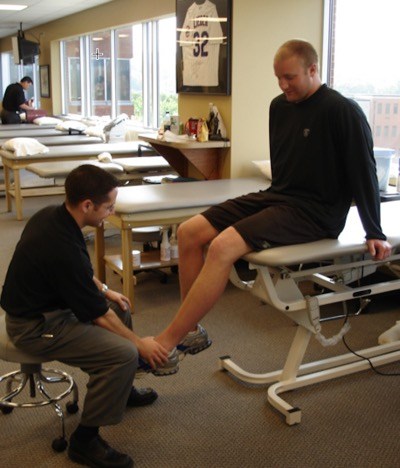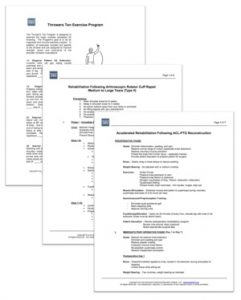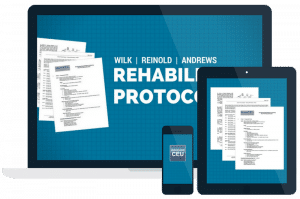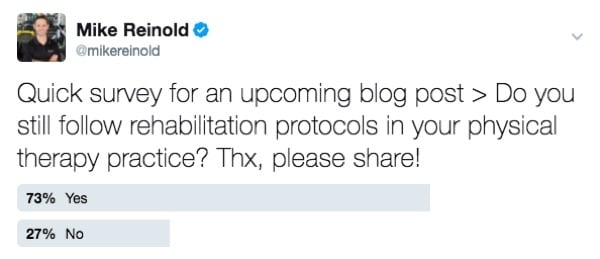The use of rehabilitation protocols in physical therapy continues to be common practice. I recently performed a quick survey of my readers and they mostly agree. The majority still follow protocols:
However, a recent trend on social media has been to criticize these guidelines and those that follow them. Students are even coming out of college shunning the use of protocols. I’ve heard so many complaints over the years, like:
- We need to use our brains, not follow a piece of paper
- Physical therapists shouldn’t follow a cookbook
- Physical therapy isn’t black and white
- We need individualize our treatment approach
I completely understand and agree, to an extent at least. As a physical therapist (or other rehabilitation specialist), we’ve spent a lot of time and energy learning how the human body functions. We’ve spent countless hours (and dollars…) becoming a physical therapist and mastering our craft. We’ve spent years refining our skills based on our experiences and patient outcomes.
We should be using our brains and individualizing programs based on each person.
But rehabilitation protocols can help us do this better if used properly. To highlight this, it helps to break down exactly what rehabilitation protocols are, and are not, in physical therapy to best understand how we should be using them in our practices.
Rehabilitation Protocols Are Not Cookbooks

Realistically, the purpose of a good rehabilitation protocol is to clearly define the goals, precautions, and timelines to gradually apply load to healing tissue. These are designed based on our understanding of the basic science of the healing process.
There is a still a huge gray area between what you definitely SHOULD be doing and what you definitely SHOULD NOT be doing.
Think of this as your opportunity to customize your recipe and make your own sandwich. You need to put bread on both sides, but what meat, cheese, and condiments you put between the slices of bread will depend on the patient, your training, and your experience. You may have your own preferences, as will I.
I often do things that are not specifically listed in a protocol with my patients that I know are in alignment with the goals and precautions of the protocol. A good example is working the soft tissue of the traps after rotator cuff repair or including core training in the early phases of ACL rehabilitation. Just because they are not specifically included in the protocol, doesn’t mean you can’t perform them.
Rehabilitation protocols are the foundation of your program, which should be adjusted based on:
- The unique goals of each person
- The specific injury or surgery
- Any concomitant injuries, which are common
Rehabilitation Protocols Are Guidelines Following Injury

In fact, many don’t even have strict timelines associated with them, but rather phases with criteria to progress. For example, here’s what some of the goals of each phases would be when rehabilitating a baseball player that has a Tommy John injury:
- Phase 1: Facilitate healing, restore range of motion, develop baseline strength and proprioception
- Phase 2: Maintain range of motion, maximize strength a dynamic stability
- Phase 3: Gradually apply load to tissue, progress to sport-specific dynamic activities
- Phase 4: Return to sport progression
Looking at the above phases, you can use these guidelines to determine what is and what is not appropriate for each phase. This is where your personal preferences can come into play. I like spicy mustard on my ham and cheese, you like yellow mustard. I won’t judge. They are both appropriate.
Postoperative is different, and we’ll discuss that more below, but for nonoperative this is how you should use a protocol. For nonoperative injuries there are times that you may want to limit an exercise or activity for a certain amount of time, however more often than not, nonoperative rehabilitation protocols are used to divide the rehab sequence into manageable chunks.
Rehabilitation Protocols Are Needed Following Surgery

Many of these may be surgeon specific, meaning that certain doctors will want you to go faster or slower based on their experience. As physical therapists, we must respect these guidelines from the operating surgeon. They know their surgery and the inside of your patient better than you do.
After surgery, protocols are used to assure we protect, facilitate healing, and gradually applied load to the injured tissues.
Simply winging it and not following a protocol will give you the least likely chance that you return the person as quickly and safely as possible. For example, you don’t want too much or too little shoulder range of motion at 6 weeks follow an anterior labral repair, both can be disadvantageous. A well designed postoperative rehabilitation protocol will put the patient in the best position to succeed.
As a young clinician, it’s also hard to prioritize the precautions and restrictions of complicated patients. For example, our rehabilitation protocols have 13 variations of rotator cuff repair protocols and 16 variations of ACL reconstruction protocols. We change the guidelines based on several factors and concomitant injuries. This is a must.
Is it Time to Finally Ditch Using Rehabilitation Protocols?
I really don’t think so, in fact, I am a huge believer in rehab protocols when used correctly. I think it’s very shortsighted to dismiss protocols as being bad for our profession or something that we are above using.
However, a protocol simply gives you guidelines as to what you can and can NOT do. What you “can” do is not restricted to what is within the protocol. Think of them as guidelines to assure that you are not going too slow or too fast. Realistically, a protocol does not list every treatment and exercise that should be included. This is where your skill and experience comes into play. You must determine what other interventions you can safely perform to help the patient, while assessing if that chosen intervention fits safely within the protocol restrictions.
We should not follow a rehabilitation protocol without thought, that is not “skilled” physical therapy. However, we must appreciate the timelines often associated with the protocols and healing tissues.
The true expert clinician realizes this and combines the guidelines of a rehabilitation protocol with their vast experience and treatment preferences.
Want to Use My Protocols?

They are the most widely used and respected rehabilitation protocols today.
Want to see what our protocols include? You can download our 3 most popular protocols for FREE:
- Accelerated rehabilitation following ACL reconstruction using a patellar tendon autograft
- Rehabilitation following arthroscopic rotator cuff repair for a type II medium-large sized tear
- Thrower’s ten exercise program

If you work in an outpatient orthopedic or sports medicine clinic, these protocols are an invaluable resource to help guide your treatment approach.







